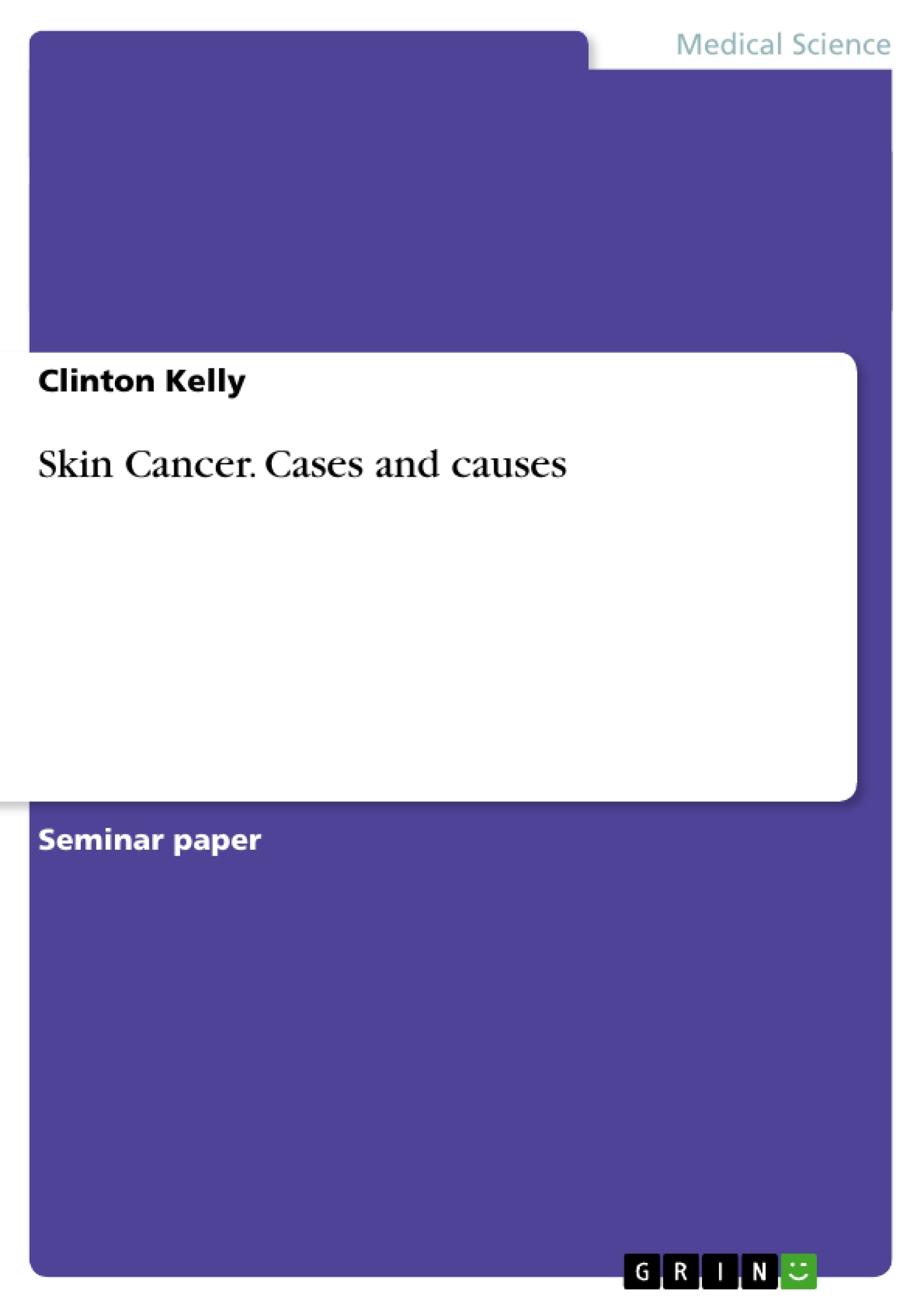Excerpt
Introduction
Skin cancer can be described as a malignant growth developing on the skin that can result in various causes. Generally, there are three most known skin cancers, these are: basal cell, squamous cell and melanoma cell cancer. Millikan (2008) states that, usually, skin cancer grows in the epidermis of the skin. Because of this, it is easy to detect skin cancer in their early stages. Presently, there are three widespread types of skin cancer and they named according to the variety of skin cell from which they develops. Unfortunately, unlike other kinds if cancers like lung and pancreas cancers, just a few of the afflicted with skin cancer could die due to skin cancer (Millikan, 2008).
Skin cancer is among the most widespread diagnosed malignancy, it surpasses lung, breast, and prostate cancer. it has been established that melanoma type of skin cancer is the most common of all skin cancers and it is likely the most dangerous. It is estimated that there are more than one million, new skin cancer cases reported every year in the United States (American Cancer Society, 2008). A lot of people currently are dying because of melanoma skin cancer which it is attributed to be on increase because of a lot of sun (Millikan, 2008). However, the most commonly reported cases of skin cancer are those that are non-melanoma. Many of these skin cancer causes are known as Basal Cell carcinomas, which are occurs as localized growths resulting from too much cumulative exposure to the sun.
Skin Cancer estimates
According to data from the WHO, globally, one out of every three cancer cases is skin related. It is estimated that in the whole world, 132,000 cancer cases of malignant melanoma occurs every year, with skin cancer related deaths estimated to be 66,000 annually (Ferguson, 2005). In addition, over 2 million cases of other skin cancers are reported every year. In the United States, it is estimated that about 1, 1 skin cancers are reported every year and the numbers are rising. The WHO, suggests that the increase in skin cancer cancers is due to increase use of artificial-tanning beauty facilities (Ferguson, 2005). The figure below indicates the past trend of cancers in America over a period of about 30 years. As it can be seen in the figure, skin cancers cases have been steadily increasing over the years.
illustration not visible in this excerpt
Figure 1: Retrieved from: http://progressreport.cancer.gov/doc_detail.asp?pid=1&did=2007&chid=73&coid=720&mid=#key
Risk factors of skin cancer
Skin cancer is generally closely linked with persistent irritation of the skin: this entails:Excessive exposure to the Ultra-violent radiation could result in skin cancer; this could be through direct DNA destruction or through indirect DNA destruction approach. UVA and UVB have al been attributed to causing DNA destruction leading to skin cancer. Being exposed to the sun from 10 AM to 4PM when the sun is most intensive and thus more harmful could result to kin cancer. Natural (sun) and non-natural UV exposure (tanning beauty shops) are linked with skin cancer (Hampton, 2005). Because sun beds mainly cause indirect DNA destruction due to free radicals, their usage is linked with the most dangerous type of skin cancer, which is malignant melanoma (Hampton, 2005).
Lea et al (2001) explains that, UVA rays do affect the skin at much deeper degree compared to UVB rays. The UVA reaches up to the epidermis and also the dermis going deeper to the hypodermis a point where connective tissues together with blood vessels are found. UVA causes the activation of the melanin found in the epidermis resulting in alteration of pigmentation and failure of elasticity of the skin. This results in contribution to premature sagging of the skin, wrinkling and aging.
UVB rays mainly affect the epidermis resulting in redness, sunburns, and skin blistering. The melanin contained in the epidermis is activated by UVB in the same way like UVA. But, the impact is stays longer with pigmentation lasting for more than 24 hours (MacKie, 1996).
Chronic non-healing burns or wounds, particular burns: Such burns or wounds are known as Marjolin’s ulcers, depending on their manifestation. These wounds could grow into squamous cell carcinoma.
Generic predisposition: This includes “Congenital Melanocytic Nevi Syndrome” or CMNS, which has a characteristic of having “nevi” also know as moles of different sizes that appear after six months or within the six month after birth of a child. Nevi that are over 20 mm in size have a higher risk of developing into cancerous cells (Lea et al, 2001).
Human papilloma virus (HPV): This virus is usually linked with squamous cell carcinoma that affects the genital, anal pharynx, oral and also fingers. Scientists believe that a HPV vaccine could assist in preventing these cancers and also cervical cancers (Price, and Sikora, 2003).
[...]
- Quote paper
- Clinton Kelly (Author), 2013, Skin Cancer. Cases and causes, Munich, GRIN Verlag, https://www.grin.com/document/271713
Publish now - it's free






















Comments